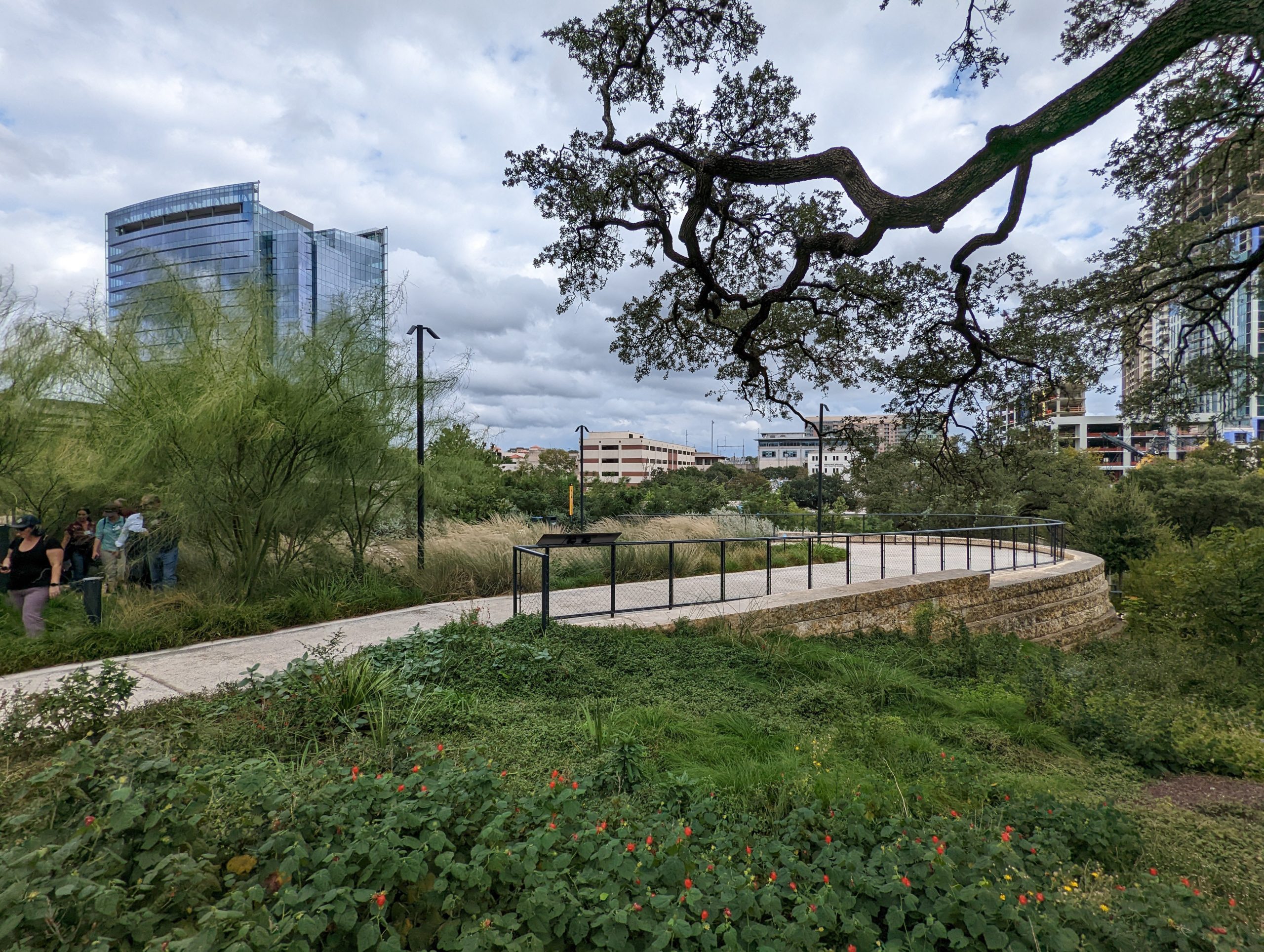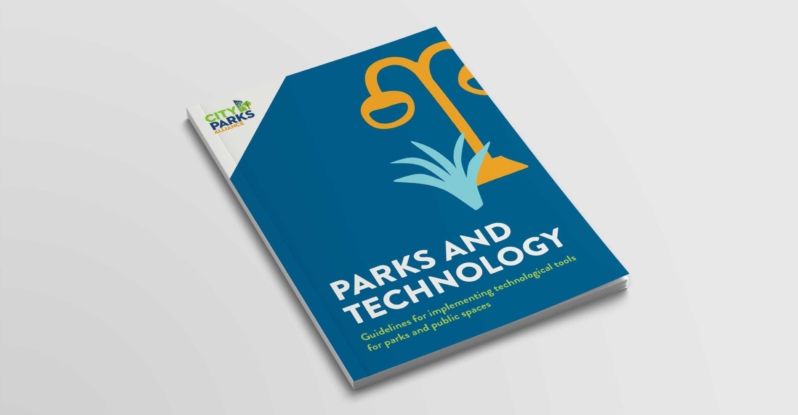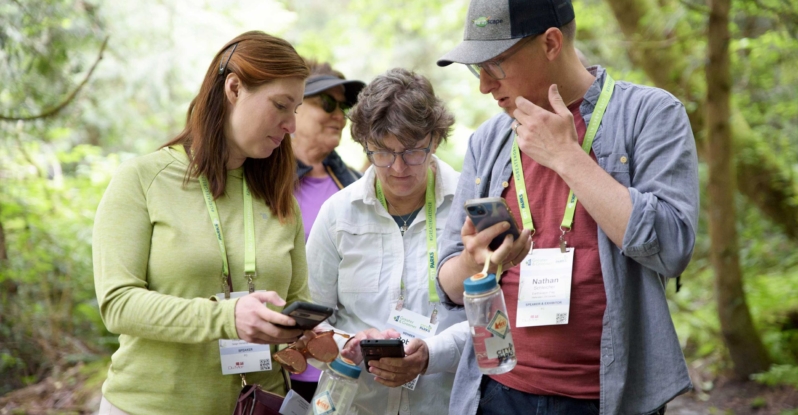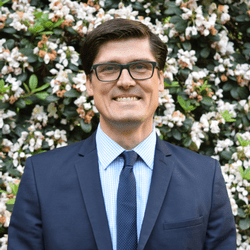
By Todd Lofgren, Deputy Director, Operations & Strategies Division, Portland Parks & Recreation
I recently had the good fortune of attending City Park Alliance’s Austin Park Study Tour and exploring Austin’s parks and recreation system. It was evident during the three-day tour that Austin Parks & Recreation has fostered a thriving ecosystem of public and private partnerships to leverage community talent and resources to meet the city’s growing demand for parks and recreation services.
One of the inspiring partnerships we learned about was the Dolores Duffie Recreation Center Pillars Project. This project aligned a partnership between community art organizations, philanthropic donors, and a bridge agency. Artists from communities along Austin’s EastLink Trail created murals celebrating the histories of communities along the trail. It was visually beautiful and meaningful as the murals reflected the local community’s past, present, and future.
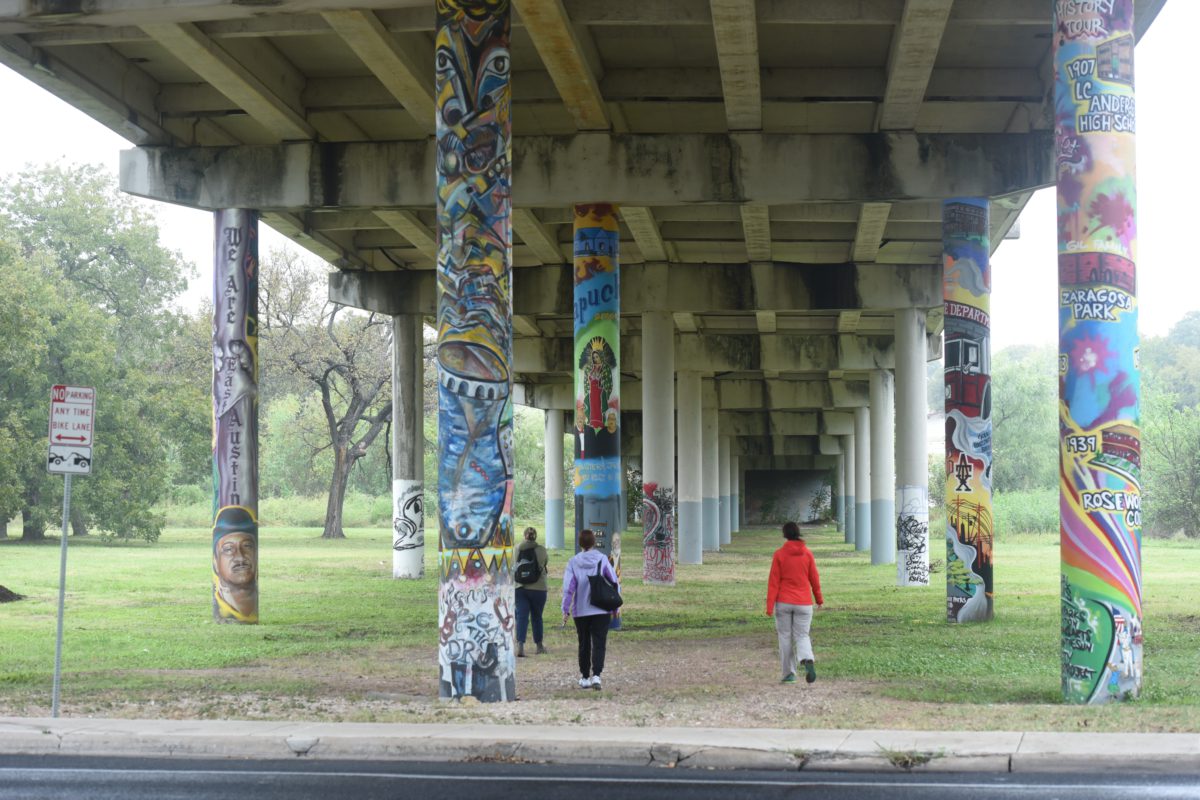
Participants explore The Pillar Project installation as a part of Rosewood Neighborhood Park while discussing the cultural history of Rosewood, equity assessment, and placemaking efforts.
Throughout our visit, it was clear the Austin Parks & Recreation team has a support system to meet the community at various levels of partnership. For instance, through its partnership with the Austin Parks Foundation, the foundation not only raise funds but also facilitates community volunteer days in the parks. During our visit, the Austin Parks Foundation had their “It’s My Park Day,” where thousands of volunteers worked to improve parks and greenbelts throughout the city.
Austin is growing quickly, and thanks to the City’s leadership and philanthropic donors, so too is its park system. During our visit, we learned how the Pease Park Conservancy team worked with the City of Austin to sustain and enhance the 84 acres of Pease Park, beginning with the development of a park vision plan. Then the Pease Park Conservancy fundraised for and invested $10 million in the renovation and improvement of 7 acres of the park, and now is responsible for operations and maintenance, programming, and events. The Conservancy continues to work on plans for implementing future phases of the Pease Park vision plan throughout the rest of the 84 acres.

Waterloo Greenway CEO Jesús Aguirre and Chief Operating Officer Erica Saenz share the park’s accomplishments and growth.
Another incredible example of Austin’s innovative approach to the development of its park and recreation system is the development and management of Waterloo Greenway. We learned how a conservancy founded in 2010 launched an international design competition to revitalize the Waller Creek district in downtown Austin. Through a joint development agreement between the Waterloo Greenway Conservancy and the City of Austin, they constructed the new 11-acre Waterloo Park. With tree-lined hike-and-bike trails, gardens filled with native plants and wildflowers, and an outdoor performing arts venue for up to 5,000 people, the park and public-private partnership was truly spectacular.
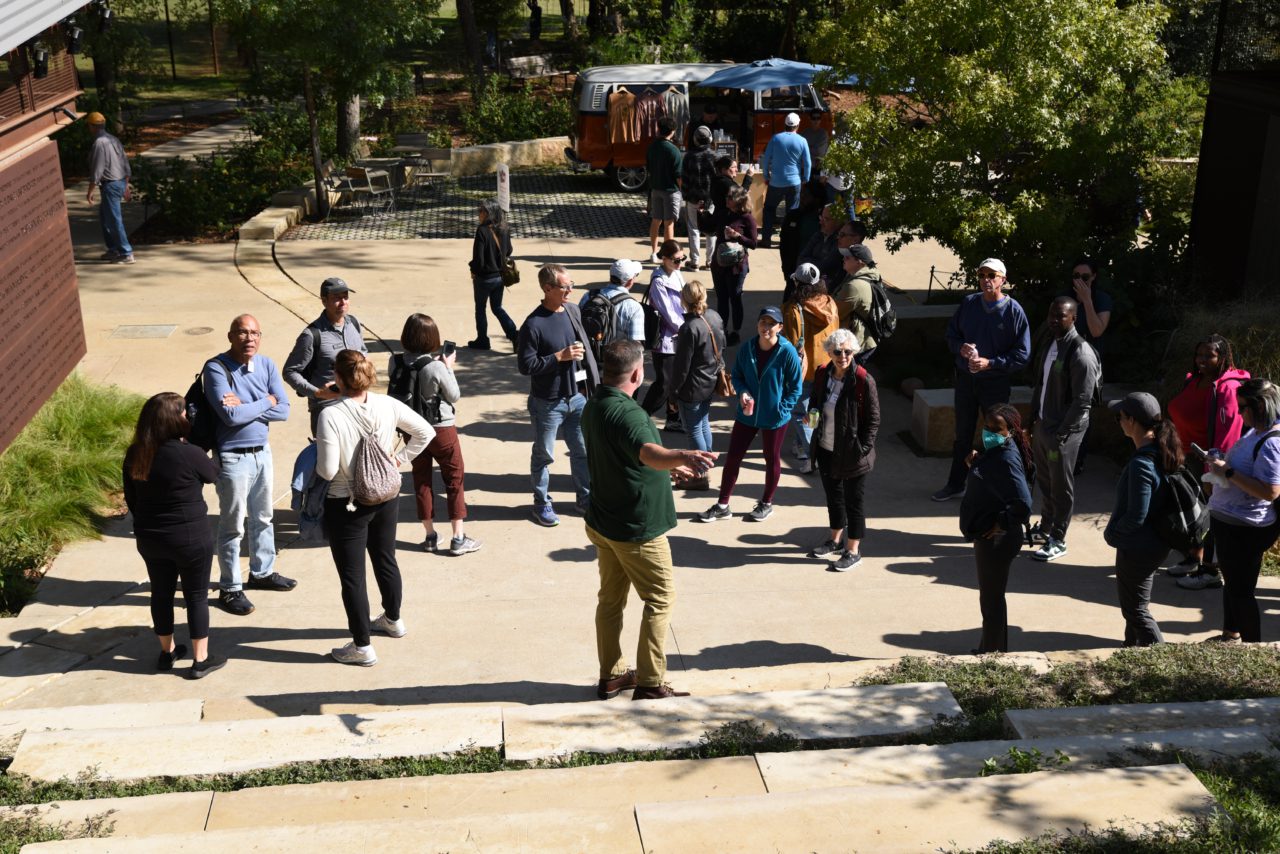
The group gathers for lunch in Pease Park to hear about the diverse ecology and history that make Austin’s first public park valuable and unique.
At the end of our short visit to Austin, my fellow park professionals and I left Austin inspired by the collaboration between the public and private sectors and the community’s dedication to serving all people of Austin. It was clear that the investments in Austin’s parks, trails, greenways, and community centers are connecting the community and making it a healthier, more vibrant place to live, work and play. I look forward to taking what I learned back to my home, Portland, Oregon. Thank you, Austin and City Parks Alliance!
City Parks Alliance shines a spotlight on innovative urban park systems through its park study tours. The tours are two-and-a-half-day events developed in partnership with host cities designed to highlight the people, places, and partnerships that make their park system special and that contribute to vibrant, healthy, and equitable communities. Questions? Email programs@cityparksalliance.org or click the button below to learn more.

